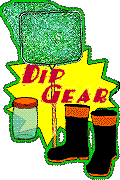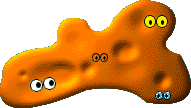

 When your class visits Hard Bargain Farm, you will explore a small part of the Potomac River watershed. To learn more about each of the different habitats in the watershed, dip nets are used to catch the organisms that live in the shallow water. By looking at the number and variety of plants and animals present, you can determine the health and productivity of the habitat.
When your class visits Hard Bargain Farm, you will explore a small part of the Potomac River watershed. To learn more about each of the different habitats in the watershed, dip nets are used to catch the organisms that live in the shallow water. By looking at the number and variety of plants and animals present, you can determine the health and productivity of the habitat.
 When you drag your net along the bottom of the water, sometimes it seems that you only come up with a net full of mud. Some are microscopic, but, look closely and you begin to see all sorts of organisms wiggling or peeping out at you. Each of these organisms has a special place in the environment, and each habitat has its own special plants and animals.
When you drag your net along the bottom of the water, sometimes it seems that you only come up with a net full of mud. Some are microscopic, but, look closely and you begin to see all sorts of organisms wiggling or peeping out at you. Each of these organisms has a special place in the environment, and each habitat has its own special plants and animals.
 To learn more about the organisms we usually catch, you can go on a "virtual" hike and dip net in four different aquatic habitats: swamp, marsh, creek, and river. Be sure to keep a tally of all the organisms you catch on the Habitat Populations Frequency Table or you will lose your data. Later, you can compare and analyze the data. Scientists use this kind of information to track the health of aquatic environments. Certain species can only live in pollution-free environments, while others are able to survive in polluted waters.
To learn more about the organisms we usually catch, you can go on a "virtual" hike and dip net in four different aquatic habitats: swamp, marsh, creek, and river. Be sure to keep a tally of all the organisms you catch on the Habitat Populations Frequency Table or you will lose your data. Later, you can compare and analyze the data. Scientists use this kind of information to track the health of aquatic environments. Certain species can only live in pollution-free environments, while others are able to survive in polluted waters.
 To get started, print a copy of the Habitat Populations Frequency Table,
then it's time to take your first dip.
To get started, print a copy of the Habitat Populations Frequency Table,
then it's time to take your first dip.